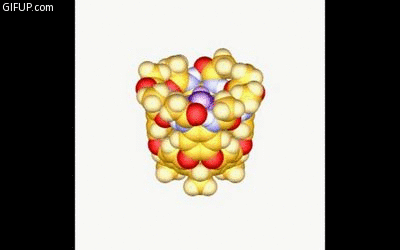By Ashley Yeager

Duke physicist Mark Kruse explains finer points of analyzing LHC data to two NCSSM students. Credit: Ashley Yeager, Duke.
Thin, blue lines spider across the computer screen. With a click on one, a solid blue peak on a bar graph pops up. A click on the other line makes a similar graph. Looking at them closely, two high-schoolers decide if they could be signatures of a particle called a Z-boson.
The girls — physics students from the North Carolina School of Science and Mathematics (NCSSM) — log their analysis of the lines and move on to another set. They aren’t getting too excited about their possible Z-boson discovery yet because they still have 48 other sets of lines, or events, to analyze.
Once they’ve worked through all the events, they’ll know if what they’ve seen could be due to a Z-boson decaying into pairs of electrons or muons.
“This exercise isn’t that much different than what scientists do to look for Higgs bosons,” said Duke physicist Mark Kruse, adding that the exercise is a good illustration of the particle-hunting process. “It shows you that you can’t just look at a single event and say ‘that’s a Higgs boson’.”
Kruse shared this insight with the two girls and a dozen other NCSSM high-schoolers during a Large Hadron Collider (LHC) Masterclass held at Duke on March 16. The European Particle Physics Outreach Group runs the masterclasses annually with help from university professors such as Kruse. This was the first time Duke hosted the program for local students.
During the day, they got an introduction to particle physics and research at the LHC and an overview of ATLAS, the experiment Kruse and his collaborators use to search for Higgs bosons and other particles. Then, after a tour of Duke’s Free Electron Laser facility and a pizza lunch, the high-schoolers got their hands on real LHC data.
They were looking mainly for events that showed possible remnants of a Z-boson. But a few Higgs-like candidates were thrown in too, which excited the students, Kruse and his two graduate students David Bjergaard and Kevin Finelli. The group may have even found a Higgs candidate in one of the first event analyses they looked at during the day.
But, as with all discoveries, they had to take a closer look at their analyses and share their work with others. The group closed the day with a videoconference with high-schoolers in Medellin, Colombia who also went through an LHC masterclass at the same time.
“This was an impressive group. They asked a lot of great questions, sparking some incredible discussion,” Kruse said. The questions — like, does anything make up a quark — are ones other audiences are perhaps too intimidated to ask because they might think it’s a silly question, he said. But it’s these questions that really get everyone thinking about the fundamentals of physics and how much scientists still don’t know, including if quarks can break down into anything smaller. This is in fact one of the many questions LHC scientists are trying to answer.
Based on the success of the class, he is now thinking of running it again for physics students from other area high schools and possibly adapting it for journalists and policymakers. The goal is to illustrate to a wider audience the “gradual, cumulative nature of discovery” at the LHC, he said.











